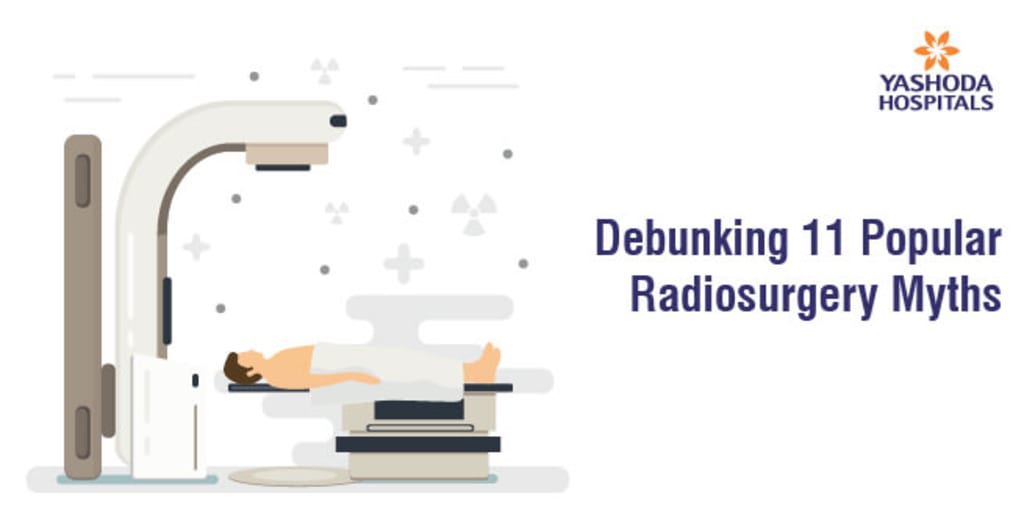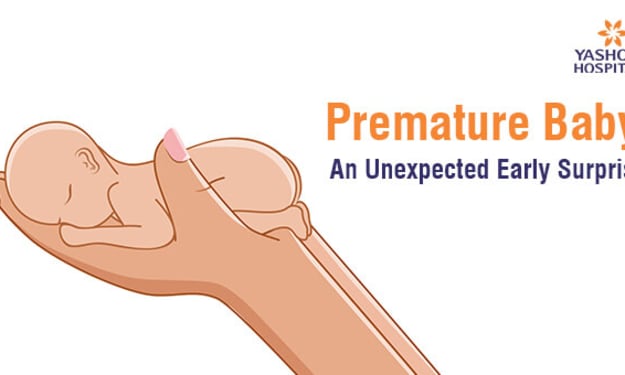Debunking 11 Popular Radiosurgery Myths
Brain tumor Myths

Debunking 11 Popular Radiosurgery and Brain tumor Myths
Radiation? Cancer? Chemotherapy? What are the risks? It can be very challenging to deal with all of the unsettling questions that come up after learning that a loved one has been diagnosed with cancer. But even the toughest challenges in life can be overcome with the right knowledge and right decisions. A trustworthy doctor can help the patient get through this ordeal by using the appropriate therapeutic methods, which may include radiosurgery, radiotherapy, surgery, chemotherapy and immunotherapy, or a combination of any of the treatment options mentioned.
Radiosurgery involves extremely focussed high-dose radiation targeting a particular area in the body to kill cancerous cells within. Given the fact that it is non-invasive, it is one of the safest treatment methods. The duration of a single session is roughly 20 to 30 minutes. It could be applied as a stand-alone treatment strategy or combined with other therapies, including surgery, chemotherapy and others.
It can be misinterpreted even though it is well-known, reliable, and one of the most successful types of cancer treatment. Several radiosurgery-related myths include:
1.MYTH: All brain tumours are cancerous!
FACT : No. Nearly half of brain tumours are non-cancerous.
2.MYTH: All brain tumours require surgery!
FACT : May not be. It is true for most of the bulky, brain parenchymal tumours and tumours with mass effect. There are many brain and spine tumours where surgery is absolutely not necessary and not recommended. Eg. Brainstem lesions, Cranial nerve schwannomas, recurrent AVM, trigeminal neuralgia etc.
Can brain cancer be avoided?
Although a brain tumor cannot be prevented, the risk of developing one can be reduced.
CONSULT OUR EXPERT FOR FREE SECOND OPINION
3.MYTH: Radiosurgery is Performed by Neurosurgeon!
FACT: No. This procedure is performed by a Radiation Oncologist trained in radiosurgery.
4.MYTH: Radiosurgery is Not Safe
FACT : Millions of people undergo radiosurgery every year as doctors believe it is one of the safest and most effective treatment approaches for cancer cure. It is less risky than traditional surgery as it does not involve incision and the complications of anaesthesia, bleeding, and infections
5.MYTH: Radiosurgery is Painful!
FACT : Radiosurgery doesn’t hurt at all, except for the need to maintain constant posture, or the need to wear an immobilisation mask for stability. However, other than these brief discomforts, it is not painful.
6.MYTH: Others can contract the radiation from cancer patients
FACT : No. A patient does not become radioactive as a result of radiation. It doesn’t hurt other people. If there is a possibility that this could happen, the doctor will give the patient detailed instructions beforehand. However, that’s not usually the case
7.MYTH: Stereotactic radiosurgery can only be done in brain tumours!
FACT : Not exactly. SRS is Stereotactic radiosurgery of brain and spinal cord. SRT is SRS when delivered in more than 3-5 sessions. SBRT is stereotactic body radiotherapy. It is similar to SRS/SRT but delivered outside the central nervous system. Like Prostate, Liver, Lung, Pancreas, bone etc.
debunking-2
8.MYTH: Radiosurgery requires Hospital admission!
FACT : Absolutely not. It is a daycare procedure. Usually completed within 1-5 sessions.
9.MYTH: Radiosurgery is only performed for cancerous tumours in the body
FACT : Common indications for SRS are Low grade glioma, Uveal melanoma, Brainstem glioma, New and relapsed brain metastases, relapsed primary malignant lesions of brain etc, but it can also be done in many benign (non-cancerous) indications like Meningioma, AVM, Schwannoma, Trigeminal neuralgia, Pituitary adenoma, Craniopharyngioma, Acoustic neuroma, Chordoma, Ependymoma, Glomus tumour, cavernoma, hamartoma etc
debunking-3
10.MYTH: Every cancer patient undergoing radiosurgery will be exposed to the same type of radiation
FACT : Radiosurgery can be done with Gamma rays and X rays. Both are equally effective but, the latest and widely used method is X ray-based treatment with Linear accelerators. Depending on the type of indication and cancer stage, radiosurgery is carefully planned. The doctor will thoroughly plan the entire treatment strategy. All the patient has to do is make sure to choose the right doctor.
11.MYTH: Radiosurgery exposes the entire body to radiation
FACT : Radiation treatment is confined to the site of the tumour in our body. With advanced techniques, the ionising radiation is targeted towards the tumour and is not exposed elsewhere. Some healthy cells surrounding the area may be slightly impacted, but the rest of the body won’t be harmed.
Cancer is frightening, but with the right treatment plan, the doctor can assist in eradicating the tumour. The doctor will choose the treatment method based on the patient’s preferences. As a result, it is critical to clarify any misconceptions with the oncologist prior to treatment. Not only must the patient be physically present for the treatment, but he must also be mentally prepared for a positive outcome. If you’re determined to put an end to cancer, you’ve already won half the battle.
References
Internal radiotherapy safety
https://www.cancerresearchuk.org/about-cancer/cancer-in-general/treatment/radiotherapy/internal/safety#:~:text=The%20radiation%20doesn’t%20travel,pregnant%20women%20for%20a%20time.
Radiosurgery
https://en.wikipedia.org/wiki/Radiosurgery
Radiotherapy – what patients need to know
https://www.iaea.org/resources/rpop/patients-and-public/radiotherapy#:~:text=Yes%2C%20radiotherapy%20is%20a%20well,cervical%2C%20prostate%20and%20skin%20cancer.
Dispelling Some Common Radiation Therapy Myths
https://www.foxchase.org/blog/dispelling-some-common-radiation-therapy-myths
About the Creator
Enjoyed the story? Support the Creator.
Subscribe for free to receive all their stories in your feed. You could also pledge your support or give them a one-off tip, letting them know you appreciate their work.





Comments
There are no comments for this story
Be the first to respond and start the conversation.